Demolition, renovation and new construction in my neighborhood of Boeung Keng Kang 1 (BKK1) is transforming an area that many expats favor into one that is becoming hard to recognize.
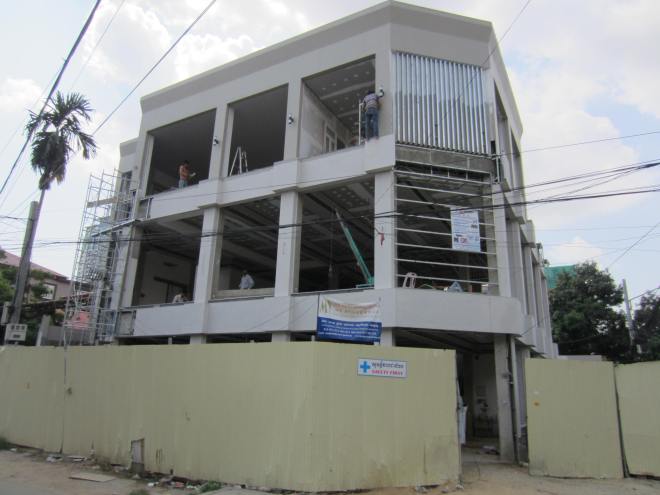
This former villa, which had become a restaurant, is across the street from the house in the top photo. (Warning: Numerous images below.)
What is happening here at a dizzying pace merely reflects a situation in which property development in Phnom Penh has soared and, along with it, prices.
Investors in residential buildings in prime neighborhoods such as mine drove land prices up in the last half of 2014 alone by 10.7 percent, according to one respected index. The cost of land for office development climbed by even more.
I understand that a slim plot on which a narrow Manhattan townhouse or Washington, D.C. row house might occupy was going for $1 million last year around my apartment building and now undoubtedly for even greater sums. Such amounts do not seem to discourage retail buyers. As a former real estate broker in the U.S., I have to say that never have I imagined so much activity, let alone witnessed it.
There is so much activity that construction workers today command ever-increasing wages, though to amounts pitiable by the standards of the West and with insufficient attention to their safety.
When I moved to my neighborhood almost a year and a half ago, it was a pleasant mix of modest family-owned restaurants and shops, elaborate villas (what we would call McMansions in the States), and a few condominiums of perhaps 15 stories such as the one in which I rent.
Not so today.
Developers are erecting high-rise buildings that investors from other Asian countries as well as members of Cambodia’s elite class are snapping up like so many smart phones on sale. Good-size apartments in new buildings might sell for a few hundred thousand dollars or significantly less, with expansive ones easily topping $1 million.
The investors hope to rent out their furnished two-bedroom units for $1,500 monthly, give or take. They are causing tall buildings with swimming pools and other amenities to spring up all around my five-year-old condominium like so much asparagus on a warm day.
Where villas once stood, there now are more cafés specializing in coffee that compete with each other than I can count in the area; in one intersection, there are two of the same name on opposite corners and a relatively new second brand across from them. A KFC, Burger King and Domino’s have been opened in the past year within sight of each other and just down the block from an outlet of a Korean chain of barbecued fast food.
Lacking any real distinction but adding to the ambiance of Boeung Keng Kang 1, many of the rapidly disappearing villas evoke mid-century architecture and have provided a scale that I welcome. But they are the victims of expansion and demolition to make way for crass commercial activities (for example, a bank), new highrise developments and, less tragically, occupancy by NGOs seemingly with more money to spend on themselves than to spend on their missions.
Although someone who lived for so long in New York City might be expected to accept the increased density and obstructed views with equanimity, I am not happy to observe what is happening literally on almost every block. My neighborhood is irretrievably changing.
I entertain myself by musing that we are in the midst of a real estate bubble that has gone unrecognized. When it bursts, perhaps I’ll be able to move to a fancier abode at a rent even lower than the $1,000 that I pay monthly for a furnished two-bedroom corner (as in breezy) unit with open views to the south.
Most real estate professionals (of whom not so many are professional) deride the notion of a bubble, arguing that we are experiencing, instead, a construction boom. But there is some disagreement.
I have been forecasting a bubble for some time and take comfort in knowing that, if a clock can be correct twice a day, I can be right once this year. It is hard to believe that I won’t be. In any case, I decided to document what has been happening to my comparatively desirable neighborhood.
To that end, I canvassed two blocks in each direction from my building two weeks ago. Including my street, the 12-square-block area encompasses 40 one-block-long streets — my Street 322, then up to 306 and down to 352 (numbers are skipped here in Phnom Penh) between my side of Monivong and Norodom boulevards.
If you know Manhattan, consider the area I covered as roughly comparable to the blocks contained between West 72nd and West 68th streets between the Hudson River and Central Park. Then imagine what the volume of construction here would look like there within the 12 square blocks I surveyed.
You will find below my snapshots of all the activity I found — land that has been made vacant, buildings being demolished, villas undergoing major insensitive renovation and big construction projects crawling upward.
You may notice a couple of duplicates when I shot photos from different angles, but the number in my small area has reached some 30 instances of projects about to begin, already in progress and all but finished. It also is possible that I missed a couple in my camera as I pulled out images to post. Still, the group is out of date already: I saw yet another house being torn down one week after I concluded my very recent photo tour.
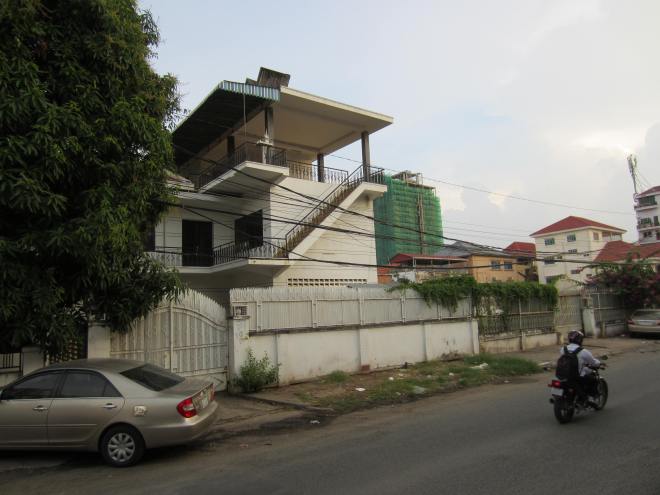
A sign outside the empty house that advertised more than 3,200 square meters (nearly 35,000 square feet) for sale recently vanished. Construction din and dust undoubtedly will soon follow.
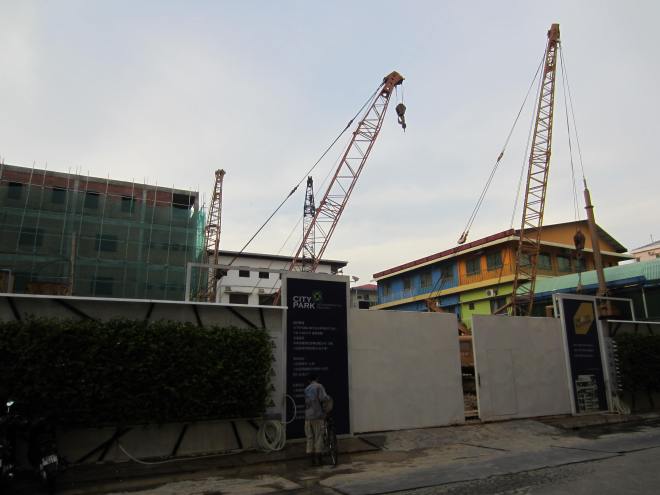
Excavation for the foundation has started on this luxury high-rise, which has sales posters in front.
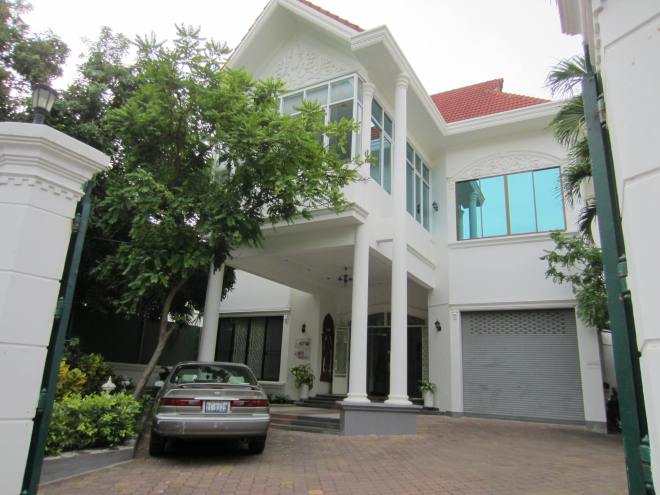
Another lovely villa, with unseen dog, which didn’t bark until it was almost too late for my safety.
If you have scrolled down this far, then you undoubtedly appreciate just how great is the impact in such a small part of one neighborhood. The clamor and the ineffable diminution of the neighborhood’s ambiance are unavoidable as new development proceeds willy-nilly. It must be hard to comprehend that activity virtually everywhere else in the much larger area called BKK1 is equally rampant and, in an important sense, destructive.
While the projects are a sign of progress, I have to ask whether it is possible to label some progress as dubious.
The conflict between “good” progress and “bad” progress is inescapable everywhere that I have lived. I am thinking of the two highrises that now dominate the skyline of Manhattan’s Upper West Side on Broadway in the high 90s and the resulting restrictions against more of them. Stopping such progress to promote historic preservation or merely to safeguard the way that a neighborhood feels is, in my view, the lesser of the evils of stagnation and evolution.
Here in Phnom Penh in general and BKK1 in particular, there is less historic architecture worth preserving than in many of the world’s other cities. Yet just preserving a neighborhood’s character has to be worth something, must be worth a government’s attention.
As far as I know there are zoning measures in place. Whether they are adequately drafted or sufficiently enforced is highly debatable. The evidence in my immediate area and beyond suggests that neither is the case. It is a pity.
E-mail: malcolmncarter@gmail.com

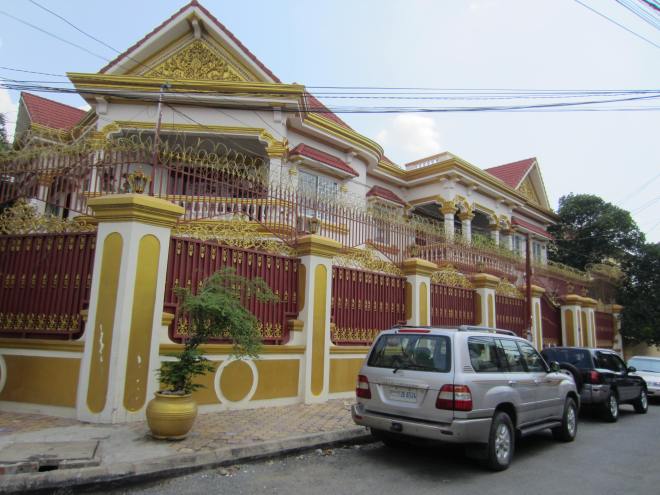
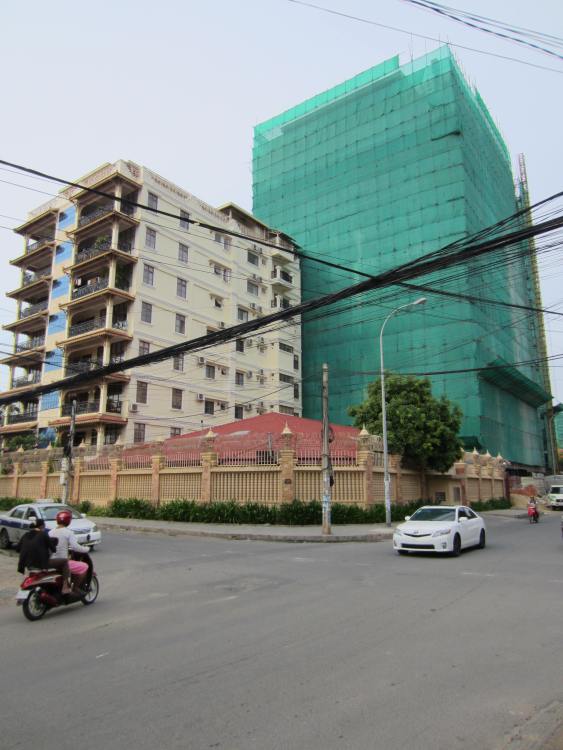
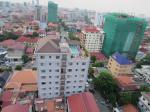
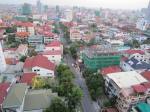
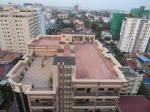

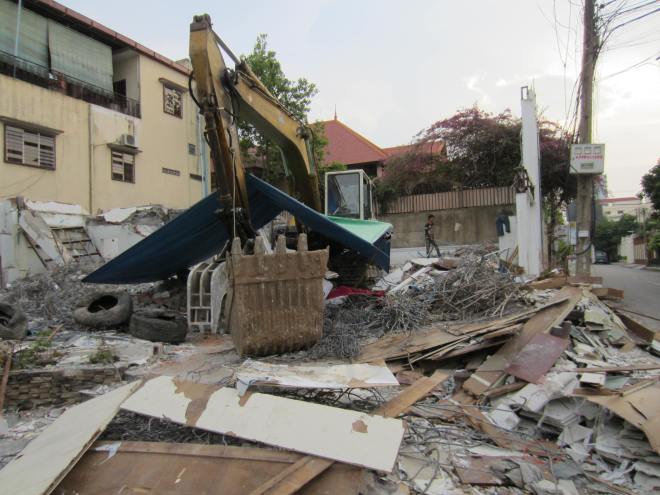

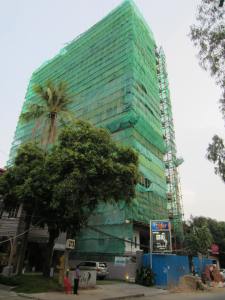
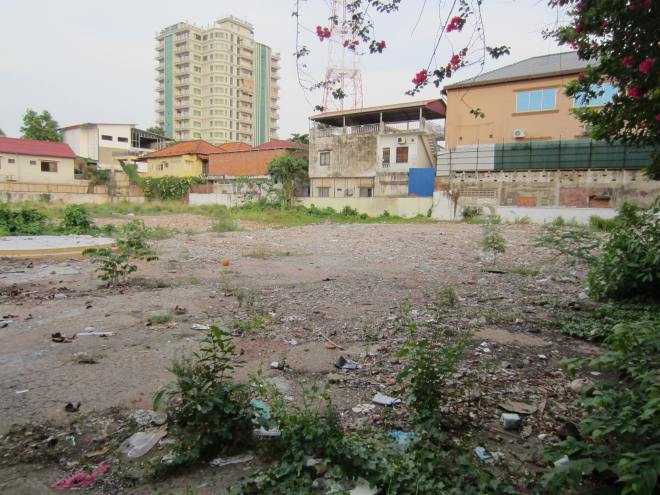
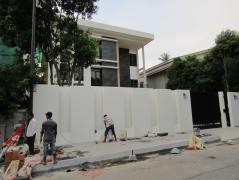
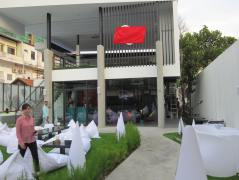

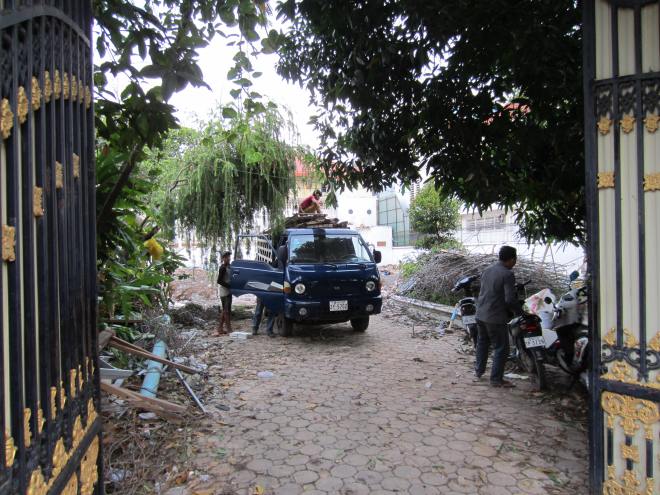
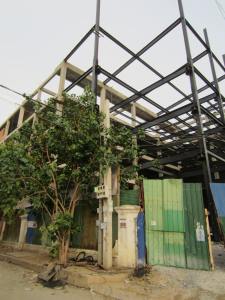
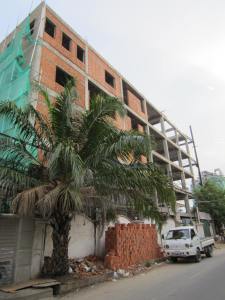
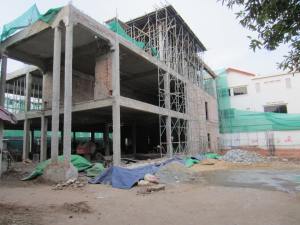
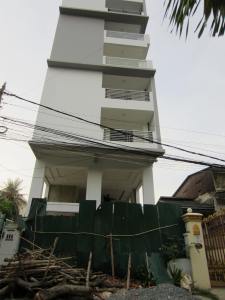

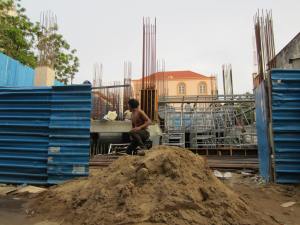
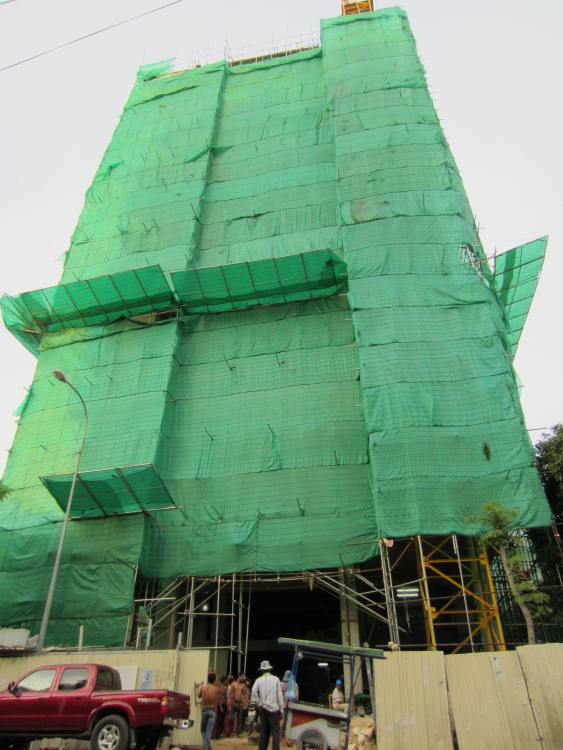
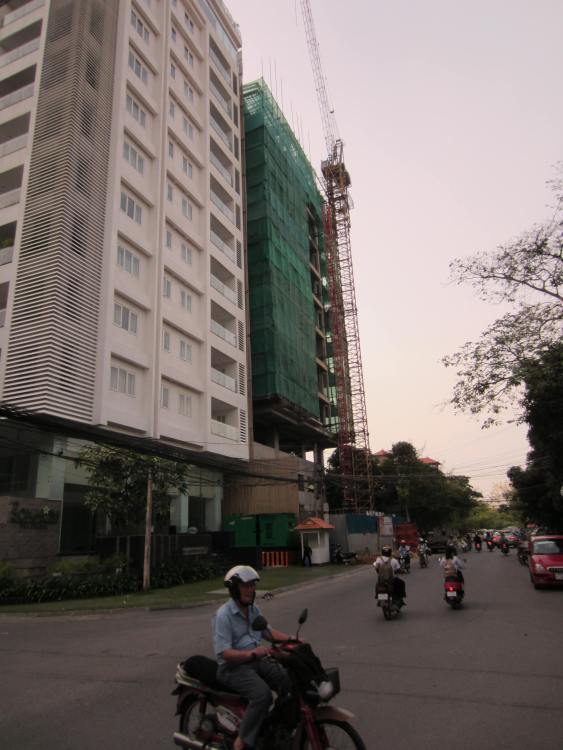
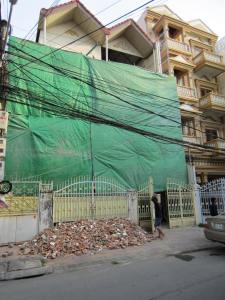
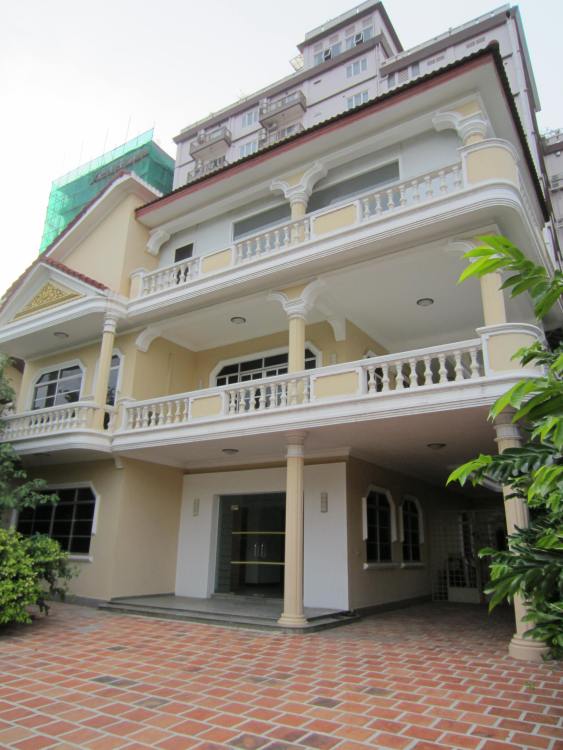
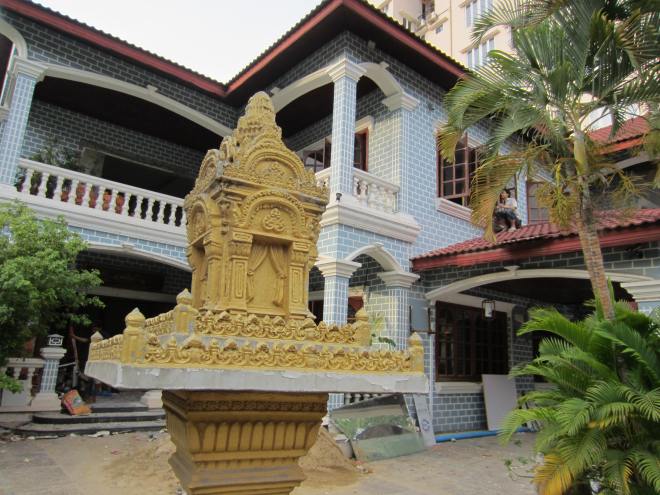
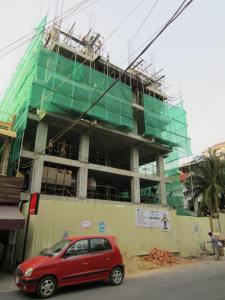
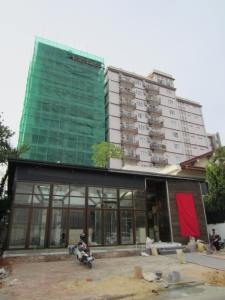
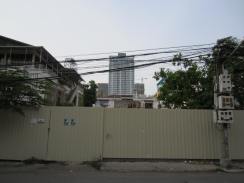
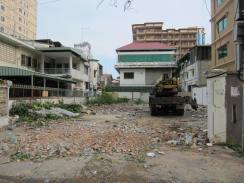
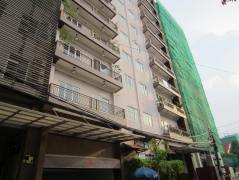
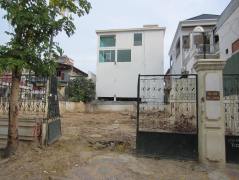
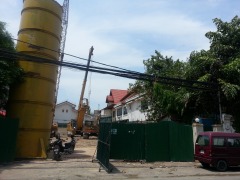
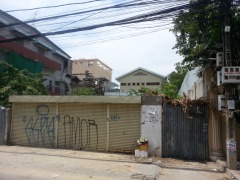
This is incredible and disheartening. Thanks for the post!
LikeLike
Who in Cambodia is able to pay $1500 a month for rent? My Cambodian friends have decent jobs but still make much less than that! They would never be able to afford anything approaching that just for housing, never mind other living expenses!
LikeLike
Uh expats and other employees of NGOs and additional well funded organizations, Brian. Whether there are enough such souls is why we are entering perilous times for investors.
LikeLike